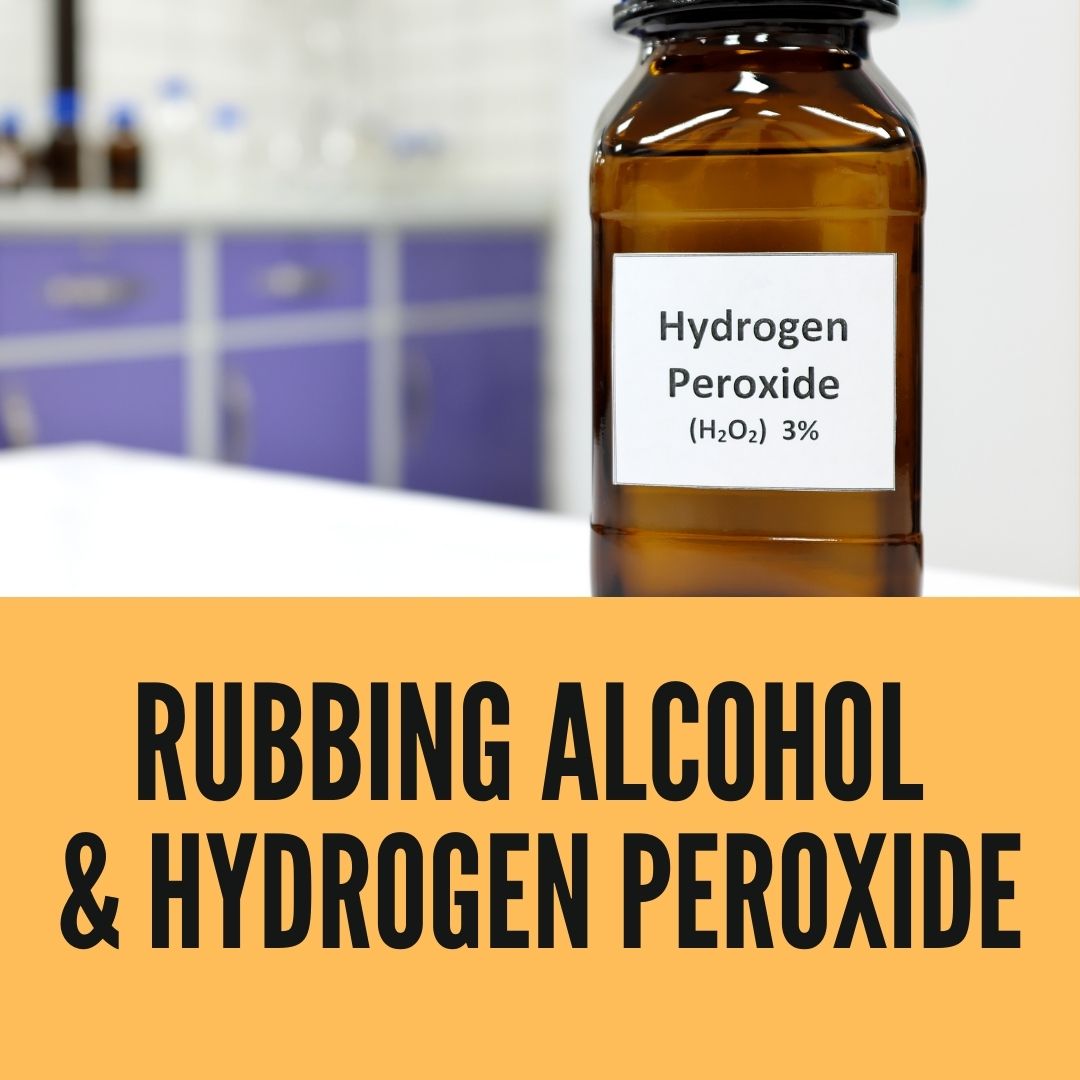
During the height of the COVID-19 pandemic, most people were scrambling for ways to disinfect surfaces and to keep their hands clean, especially due to hand sanitizer shortages around the world.
This led to many novel ideas being tested out, including people mixing rubbing alcohol and hydrogen peroxide.
So can you mix rubbing alcohol and hydrogen peroxide? is rubbing alcohol the same as hydrogen peroxide? Well, You can mix rubbing alcohol and hydrogen peroxide without any negative effects occurring. Of course, it’s always a good idea to take care when mixing two chemicals, and you should never consume the mixture, but nothing bad will happen as long as you follow these basic guidelines.
That being said, you may be wondering why you would want to mix rubbing alcohol and hydrogen peroxide in the first place.
In this guide, I’m going to take a look at the motivation behind doing so, what you can make when you mix the two, and what you can expect to happen when you mix them.
Can I Mix Rubbing Alcohol and Hydrogen Peroxide?
You have to be careful when mixing chemicals, even when they can be found in the household, as some of them may combine into potentially lethal compounds.
For example, mixing chlorine with certain substances can create chlorine gas which can easily cause respiratory damage and even death.
That brings me to the case of rubbing alcohol and hydrogen peroxide. Many readers have asked whether or not it’s safe to mix these two household disinfectants, and I’m happy to report that it should be in the vast majority of cases.
Mixing two in reasonable concentrations shouldn’t have any adverse effects.
That being said, you’ll want to make sure that you’re mixing the two of them in a clean area and that you’re using protective gloves while doing so.
While protective gloves aren’t strictly necessary, it’s wise to do so based on the concentrations that you’re working with, since peroxide can sometimes stain your skin.
When you mix the two substances, you shouldn’t expect anything crazy to happen. The two liquids won’t start exploding or foaming the minute they come into contact with each other, but you’ll want to wait until you’re ready to use your mixture of rubbing alcohol and hydrogen peroxide before you mix them.
If you wait for a few hours after you’ve mixed the two substances, they may end up reacting with each other over time and turning into a compound that doesn’t have quite the same effects that you were looking for.
There are a few reasons why you may wish to mix the two substances, but the most common one is creating a disinfectant.
Since these two liquids act well as disinfectants on their own, they typically aren’t used as household disinfectants when mixed together.
The most common use for the mixture of rubbing alcohol and peroxide is as an emergency hand sanitizer if you can’t find any premade ones available.
I’m going to take a closer look at how you can make a hand sanitizer out of these two substances in the coming section of the guide.
Making Hand Sanitizer With Rubbing Alcohol and Hydrogen Peroxide
There are a few reasons why you may wish to make your own hand sanitizer at home, and as we saw earlier in the COVID-19 pandemic, you can’t expect stores to always have stock available. Here’s a list of alternatives you can use.
Another benefit is that you know exactly what is going into the hand sanitizer that you make yourself.
Since rubbing alcohol and hydrogen peroxide are both excellent disinfectants that don’t react adversely with human skin, then they are excellent candidates for hand sanitizer ingredients.
Primary Ingredients To make own hand sanitizer
- Isopropyl rubbing alcohol at a 99% concentration (4 cups)
- Hydrogen peroxide at a 3% concentration (¼ cup)
- Glycerin or glycerol (4 teaspoons)
- Distilled or boiled water (1 cup)
- A clean container with a maximum capacity of about 8 cups
No products found.
Keep in mind that the volumes for each of the ingredients in this recipe are for a large batch, and if you don’t find yourself needing that much hand sanitizer, then you can make half or even a quarter of this amount.
as a result that you likely won’t find these ingredients in small enough containers to make a much smaller batch, so you’ll have some leftovers afterward.
Gather together all of your ingredients so you have them within easy access and be sure to wash your hands before you start putting together your hand sanitizer.
While the ingredients are all antiseptic, there’s no reason to potentially introduce germs into the mix while you’re working, and washing your hands will make sure that you can keep them out.
Also, be sure that the mixing container and anything that you intend to store your hand sanitizer in are fully clean.
This will ensure that you don’t end up introducing any other variables to the mix before you’re even able to use your homemade hand sanitizer. You can use boiling water to ensure that they’re sterile.
Start off by adding your isopropyl alcohol to the container and then add in the hydrogen peroxide.
Along with making the solution more effective, the peroxide will be able to kill bacteria that may exist in the container or the bottles, ensuring that your hand sanitizer is sterile.
- Contains One - 16 fl oz Bottle of Food Grade Hydrogen Peroxide
- It Works! The ultimate cleaner for 1st AID cuts and scrapes; BODY ears, throat and diffusers; HOUSEHOLD counters, surfaces, cutting boards, laundry, stains, toothbrush and baby gear; FOOD nuts, seeds, grains, veggies, fruit, meat, fish and chicken; PETS oral care and skunk odor; and PLANTS vase water and sprouts.
- It's Clean! Free of toxic stablizers found in brown bottle peroxide. NON GMO. Great for homes with gray water systems.
- It's Safe! Won't burn like 35% or even 6% H202
- It's Planet Positive! It's good for the environment making grass greener and oceans cleaner.
After that, you can add glycerin to your solution. This ingredient is crucial because it will ensure that the rubbing alcohol and the peroxide don’t end up drying out your skin when you use your hand sanitizer.
That’s a risk because both of these ingredients are known for sucking the moisture out of the skin.
Wrapping Up
Finally, add in the water that has been sterilized you can then mix all of your ingredients together and your hand sanitizer will be ready.
If you want, you can use a funnel to get the sanitizer into smaller bottles where it will be more easily accessible for use. Be sure to wait at least 72 hours before using it.

My name is Logan, and I’m a 36-year-old dad who owns a small pressure-washing company in the suburbs of Atlanta, Georgia. My main goal with rubbing-alcohol.com is to show you how versatile isopropyl rubbing alcohol can be! I hope. You find it useful.

